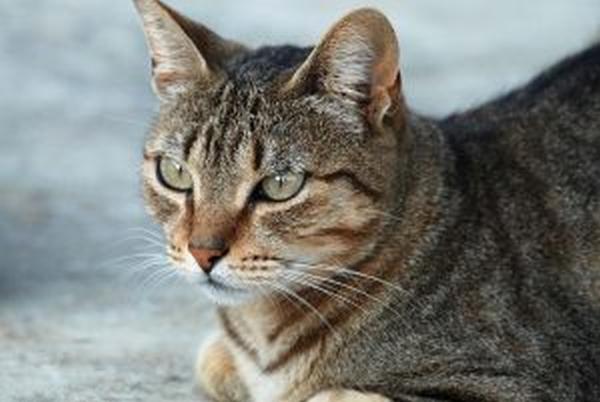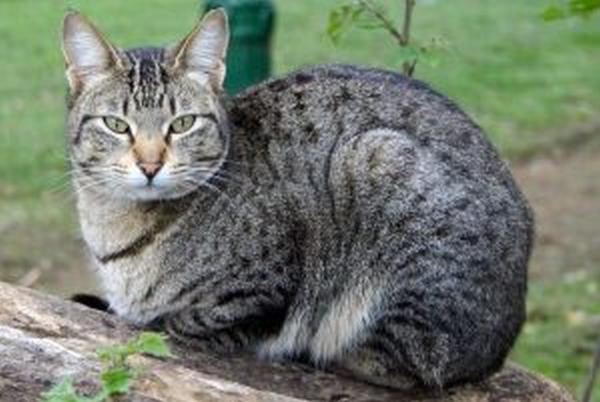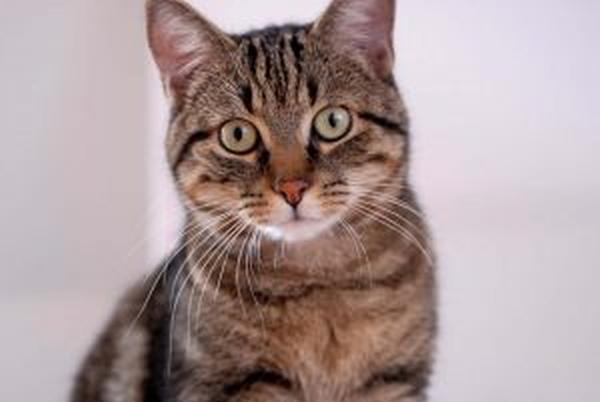European Cat: Breed Personality, Behavior Facts and Characteristics, Health Care Info

The European cat is active, affectionate, intelligent, curious and shy. It has good socialization with people. Over the years they have earned a place in the hearts of people.
Also known as European common cat or Roman cat, since at that time they expanded throughout Europe. The Latin name is felis catus. It is believed that this race was originated by the cross between the African mountain cat and the jungle cat. A very uncertain source.
European or Roman cats have short, two-colored, three-colored brindle coat, or they may also be hawksbill or mottled, gray and orange.
Images and Photos of European or Roman Cats
In this section you can find photographs of the European or Roman Cat. Click on the image to see it in full resolution.



What is a European or Roman cat?
El European cat, common European or Roman It is the most common cat that exists. It is everywhere, it lives in houses and streets. When you hear the term cat, the European common cat usually comes to mind. Its shape and face is what most of us recognize.
European cats have muscular build, elegant. It is a medium breed, but can weigh up to 8 kilograms, with the male being slightly larger than the female. They do not have fixed measures, but they are harmonic.
What is the origin of European or Roman cats?
The European kitten is descended from the african wildcat (felis lybica) and genes are found African jungle cat (felis chaus). The cat came to Europe by the Greek, Phoenician and Roman invasions.
When these African cats arrived in Europe, they crossed with the European wildcat originating the common domestic cat. Hence the European cat came to America giving rise to the American cats of short and hard peo. Also the common cat was introduced to England with a very controlled process of breeding, giving rise to the current British cat of short hair.
In short, the origin of the European cat is attributed to Africa, Asia and Europe
What are the most common characteristics of the European or Roman cat?
The European cat is of medium size, although the males can be larger and more muscular than the females.
The face of the European cat is broad and rounded, has a thick tail at the base and sharp at the tip. The mantle is soft and shiny.
European cat eyes can vary from blue, yellow or green.
The hair can be short and medium, you have the following types of coat colors:
Tiger color, is the best known, are the presence of dark stripes in a brown hair
The common European cat can possess a single color, more common white and black, also in gray with facial masks.
Jaspeados, is a rare tabby, with a dark line on the entire column, can also be presented in orange.
Bicolor, more common mixtures between black and white, also orange and white.
Tricolor or Spanish cat, most of them are females, with colors between oranges, black and white.
Regarding his coat we can also find ourselves before the European short-haired cat.
Regarding its morphology, there are no standards, but you can find two variants of this type of European cat:
A type of European cat shows the normal head, slender body with thin legs and medium size, making reference to its heritage of the African wildcat.
Another type of European cat has a more robust body, with short legs and a large head, closer to the European wildcat.
The classification of the European cat in the FIFE is category III.
How much does an adult European cat weigh?
The European common cat is a strong and robust breed, it can have a standard weight between 3 to 5 kilograms, although males have been found with 8 kilograms of weight.
How is the behavior of a European cat?
The European or Roman cat has an independent and individualistic personality, but when you are present is very affectionate and sweet, seek your company and attention. It is a very intelligent and clean cat with strong hunting ability, for its wild roots. They are surviving cats with better or worse conditions, like the street, country houses or a department.
It is a cat that adapts quietly to live in houses. It is a very sweet cat, with a character that will make us enjoy having it with us. At first he is a shy cat with strangers.
Although they are a bit treacherous and uncouth, they are jealous of their home and all of its members, they will not want to be with others. The females are more delicate than the males, even in their physiognomy the difference is noticed. The males are more playful than the females.
We must take that the behavior of cats can have a general pattern, however, each cat will act according to how he lived before. Those habits will stay with our kitten, so it is necessary to socialize as soon as possible when they are puppies.
How much does a European or Roman cat live?
A European or Roman cat has a life expectancy of between 15 to 18 years, therefore good care is required in his youth to avoid problems in his adulthood.
How can you get the confidence of a European cat?
Being very smart to European cats, they have known how to adapt well to the closeness with people, especially with some characteristics. They like to have freedom and with a cat we have it, because they are independent when they are alone and affectionate with our company.
When a European cat gives you his confidence it is because you have earned it with a lot of time, they watch you because they will not be in a room that you do not visit. They will wait for you to sit quietly, that is perceptive intelligence.
They perceive your tranquility or nervousness and act according to the changes, they can get bad or urinate when they do not support a sudden change.
Your tranquility comforts them, they are more active at night, because of their hunting instinct, they are alert and they want to run because they will be very focused. If you want to teach them a trick or an order, take advantage of the night because they pay more attention. Tell them what you want them to do using your gestures and your peace of mind, your voice does not matter when it comes to learning.
How to care for a European cat?
The common European or Roman cat breed does not require special care to stay fit, healthy and clean. Brush it at least once a week. It is a cat that lives about 15 years, but if you take care of it it could be ma longevo.
Give him a good diet so that he stays healthy, his coat and the shine of his coat will thank you. Control the amount of your food to avoid overweight.
Give your cat activities to keep him entertained and above all healthy. Help him with skill games, to exercise it properly.
Give her a good bed where she can sleep, clean her food box well and give her toys so you can enjoy a lot of time with your cat.
How to clean a European cat?
To clean your cat does not require much, it is a very clean animal. Brushing should be done to eliminate dead hair, in addition to checking if it has any damage to your skin or perhaps external parasites. It is also to prevent tracing your own hair causing stomach damage.
Clean your eyes with wet cotton, but if you are already an adult they secrete more tears than a young cat. Another factor that you should check is the cerumen of your ears, clean it on the outside of the ears but not inside.
Keep your cat’s nails trimmed, so you will avoid damage to your furniture and yourself.
In case your cat gets very dirty, you should bathe your cat, but it is recommended that you bathe it at least once every two weeks.
How to bathe a European cat?
Being a little feared kitten, it will be normal that you do not like the water, but you should gradually get used to the pleasure of bathing. This will depend on how you treat it when doing it.
We recommend the following steps so you can bathe your European cat.
You must prepare your cat before bathing it, bathe it and dry it.
Preparing the bath and your European cat
You must prepare everything you need to bathe your cat before. Ready warm water, we need towels, shampoo and a plastic jug. It is advisable to wash it in the sink, because around you can place the cleaning utensils.
First you start reassuring yourself, because your cat will feel how you are. Take advantage of trimming the nails of your cat, to avoid scratching you if you get nervous.
Then you get used to your cat to be wet. Place it little by little over the sink and begin to wet it gently. Let him get used to having wet hair on his legs and abdomen. Do not wet your eyes and ears.
Bathing the European cat
Once the kitten has gained confidence, wet his body with the help of the plastic jug and use the shampoo. Massage your coat and spread the shampoo until you get foam and clean it completely. Be very careful with your eyes and ears.
Once clean, start to rinse it with plenty of warm water, if it is a hot day, depending on the climate of your area, you can open the sink faucet.
After bathing the European cat
Take several towels and dry it by rubbing it, then you can let it dry to the atmosphere with a little sun.
Take advantage of cutting the nails of your kitten, because the moisture will let see the living tissue of the nail, so you will not hurt your pet. If you can not do it, you can take it to a veterinarian to help you with that.
How to clean the litter box of your European cat?
Cleaning the environment of your European cat is very important, as it will make your pet get used to it frequently. Also, avoid health problems.
In this way, it is necessary to carry out the sandbox on a daily and weekly basis.
Daily cleaning of the sandbox
You must remove the solids of urine and feces that are generated every day. You must use gloves and mask to avoid getting sick of toxoplasmosis. Help yourself with a plastic shovel. Deposit the solids in a trash bag and place it in a trash can.
Weekly cleaning of the sandbox
The weekly cleaning involves removing all the sand from the box. Put on gloves and chinstrap, deposit all the sand in a garbage bag, avoid spills on the floor. Then you should wash the litter box, use warm water and detergent that does not have aromas. Let the box dry before placing sand. You can place baking soda in the bottom of the box so that it absorbs the bad smell, then filled with sand. Place the sandbox in a good location.
Where should you place the litter box of your European kitten?
As your cat is a bit shy, you should choose a good place where you feel calm. Otherwise, you may stop using the sandbox and relieve yourself in a place where you like.
You must locate a place where there is not much noise, not much movement, because as any of us would like a quiet and private place.
What does a European cat eat?
Among the breeds of cats, the common European short-haired cat will have good space with a garden where you can climb, run or even hunt, we can offer a simple diet. If, on the contrary, you are going to live in a department, it is necessary that we control your diet to avoid overweight.
You can offer dry food, you should give plenty of water available in a clean container and change it every day. If you smell something weird, you will not want to drink the water.
You can buy wet canned food, this will be a meal to your liking, but we recommend that you use it only to reward their good attitudes.
You can also give natural food, offer cooked meat and fish, without bones or bones. You can also give him cooked viscera.
However, we recommend using all three types of food so that you have a balanced diet.
How to educate and train a European cat?
With a little patience you can teach him some tricks and do not get bad habits.
Accustom your kitten to let it rise from the ground, because it is not very pleasant; if you resist, do not leave it on the ground quickly, because you will learn that if you resist, you will not let it rise.
If your European cat scratches the furniture, teach it not to do so by showing him another object that he can scratch. For this give him a scraper to satisfy his instinct to do it, get used to it little by little, play with him near the scraper. Reward it when you start using it.
Teach him not to bite you, if he does not withdraw your hands abruptly, then he will take it as a game. To avoid this, use it to play with your toys and you will see that little by little it stops scratching you. Use balls or a laser pointer to make it play.
What disease can the European cat have?
The European cat or European common cat is a very strong and healthy breed, however, it can get sick due to lack of care.
Some of the most common diseases that can suffer are:
- Allergies
- Bronchopneumonia
- Cataract
- Conjunctivitis
- Flu
- Otitis
- Gastrointestinal problems
- Hair balls
How to keep a European cat healthy?
Keep your cleaning and hygiene careless, in addition to giving enough food in the right amount and in a balanced way. Check him frequently by a veterinarian.
Exercise a lot if you live in an apartment, give lots of toys to keep you entertained and in good health.
Something very important in the health of our pigs is that they are very fertile, they develop their sexuality at 19 months. If you want to avoid unwanted litters, you can spay or neuter your cat, so you avoid territory problems and escape from the house.
How much does a European or Roman cat cost?
It is a European cat with short or Roman hair is very common that you can find it even for adoption, but if you give it a price you could find it with an estimated value of about 20 dollars.
Where to buy a European cat?
You can find some ads on the internet, you can also visit some pet stores. What you must keep in mind is that you must find healthy, well-fed animals that are at least two months old. If you can adopt this race do it, it is a great company and does not require much care.


